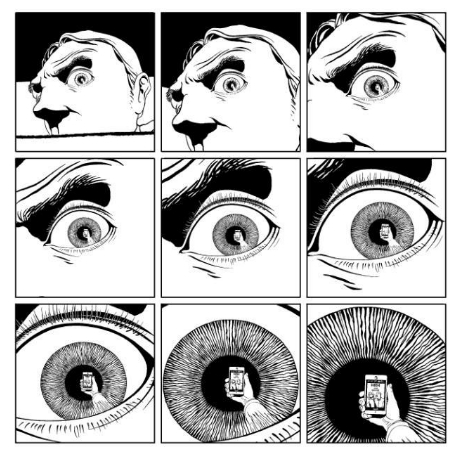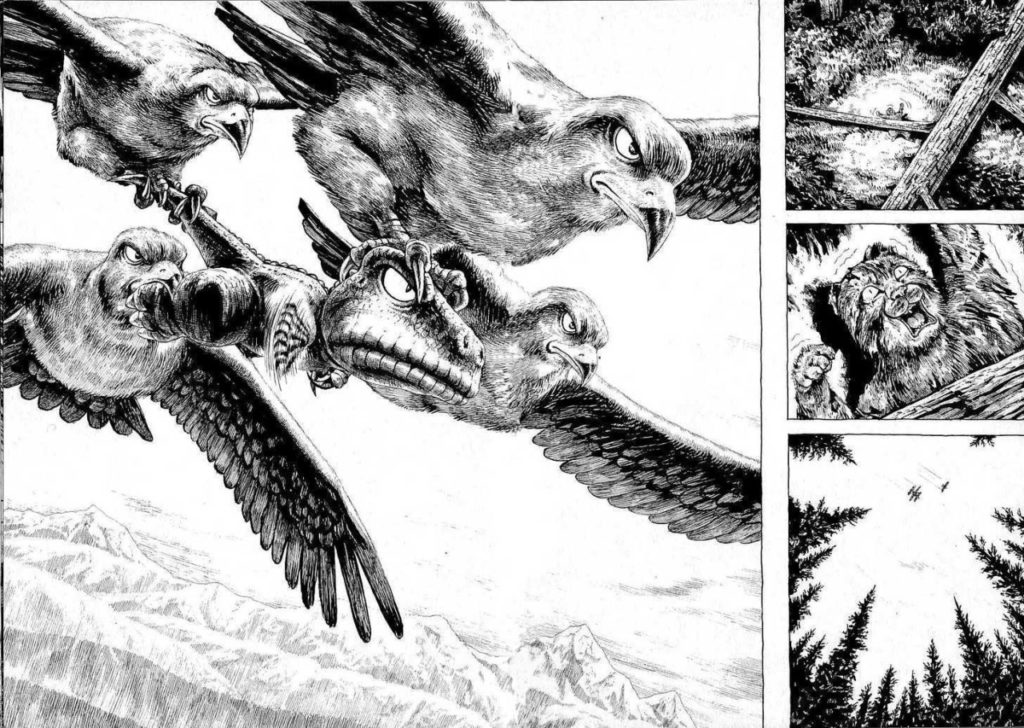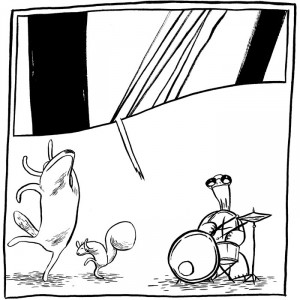In this post I reflect on silent comics. This was triggered by my visual research for my keyword project. I found a well researched blog entry by Thal Sneddon, that I will re-blog here (in parts). Sneddon is a freelance writer with a Master in Comic Studies.
From: The Silent and the Sequential: Wordless Comics (Sneddon, 2015)
“When we go with Scott McCloud’s definition of what makes a comic – “Juxtaposed pictorial and other images in deliberate sequence, intended to convey information and/or to produce an aesthetic response in the viewer” – we see that words are not required, though the distinction between “pictorial” and “other images” does imply a perceived hierarchy. Eisner requires only that a comic is “sequential art”, acknowledging that a comic without words is possible but cautioning that “sophistication” on the part of the reader is required.
In wordless comics dialogue is absent but narration is not. The lack of words means that the reader has to piece together the story, and even then, much is subjective and open to interpretation.
Unlike film or television where we simply receive the visual and audio communication, or even a book where we supplement what we are given with what we imagine, a comic actively requires us to move the characters, backgrounds, action or inaction, between what we are shown. In a wordless comic further clues are removed, making the read even more of a subjective and personal experience.”
Some examples:


In the article “Silent Comics” (Postema, 2016) the Barbara Postema, argues that the “wordless genre allows the comic to create a space that pushes the visual register to communicate in more intricate and varied ways. Wordlessness can allow the image to push beyond representing the visual diegesis in some kind of mimetic way: in addition to the visible world, the imagery is expanded to represent other sensations, including sound and its qualities and dynamics.”
Great examples for representation of sound in a ‘soundless’ comic:

“Due to the absence of dialogue, often the narratives of silent comics remain somewhat indeterminate, or lean towards the symbolic.”
This really resonates with me. Often I don’t have the confidence to make up a story or I would feel too embarrassed about it. Learning to develop pictorial narratives without relying on words can be just as powerful. This also leaves enough room for the reader’s own interpretation and frees me from the pressure of having to pick a specific message.
SNEDDON, T. (2017) The Silent and the Sequential: Wordless Comics [Online] January 20th 2015. Available from: comicbookgrrrl.com http://www.comicbookgrrrl.com/2015/01/20/the-silent-and-the-sequential-wordless-comics [Accessed: 28 November 2017].
Postema, B. (2016) Silent Comics. In: Bramlett, F., Cook, R. & Meskin, A. The Routledge Companion to Comics. London: Taylor and Francis.
Comments
Could you tell me what style are you using on your web site?
It looks wonderful.